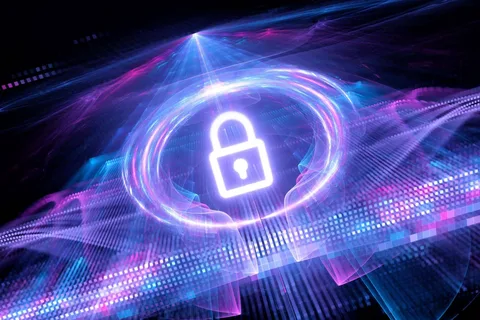Quantum Key Distribution (QKD) promises to revolutionize encryption and cybersecurity through the use of quantum mechanics. By harnessing the quantum properties of photons, QKD enables two parties to securely generate and share encryption keys in a way that is protected by the laws of physics and not fallible computer algorithms. This emerging technology has immense potential to safeguard our digital infrastructure against even the most sophisticated cyber threats of the future.
What is QKD?
The core principle behind QKD is that any measurement of a quantum system necessarily disturbs that system. By encoding encryption keys into quantum states like polarization of individual photons, it becomes impossible for an eavesdropper to intercept and read the keys without introducing errors that reveal their presence.
QKD works through the following process:
– Alice, the sender, encodes key digits as quantum bits (qubits) using properties like photon polarization. She then sends these photons through fiber optic cables or free space to Bob, the recipient.
– Bob randomly measures the polarization of the incoming photons to read the encoded keys without disturbing the quantum states.
– They then perform an error analysis by publicly comparing a random sample of the received keys to identify any discrepancies, which would indicate an eavesdropper’s presence.
– If the error rate is low enough, they assume the remaining keys were transmitted securely. The final secure key is generated only from the photons whose polarizations were correctly received by Bob.
So in essence, the no-cloning theorem of quantum mechanics ensures that any eavesdropping disturbs the quantum transmissions and reveals their presence through detectable errors. This gives QKD an information-theoretic security guarantee not possible with classical cryptography alone.
Commercialization and Real-World Deployments
Scientists have been researching QKD since the 1980s, but it is only in the last decade that the technology has advanced enough for commercial applications and real-world network integration. Several startups like ID Quantique, QuintessenceLabs and Quantum Xchange are now providing QKD solutions to enterprises and governments.
Notable large-scale QKD network deployments include:
– SwissQuant’s deployment connecting several Swiss towns since 2009 over a 100 km fiber network. It is one of the earliest and longest-running QKD networks.
– China’s quantum encryption satellite (Micius) that transmitted quantum keys over a record distance of 1,200 km between satellite and ground stations in 2017, demonstrating feasibility of satellite QKD.
– Austrian shopping mall with QKD network connecting bank ATMs since 2015 for secure online banking.
– Tokyo QKD network integrating several financial and business locations since 2020 for protection against cyberattacks.
– Quantum encryption link between Los Alamos National Lab and Chicago by Northrop Grumman in 2021, aiming for a nationwide quantum internet.
With ongoing projects, the goal is to establish global quantum secure communication backbones using integrated fiber and space-based QKD networks. Several standardization bodies are also developing protocols for integration in 5G networks and beyond. Commercial availability and partnerships indicate QKD’s imminent real-world deployment.
Challenges and the Road Ahead
While Quantum Key Distribution promises future-proof encryption, several technical challenges remain. Current limitations include short maximum transmission distances of a few hundred km over fiber, fragile quantum states prone to errors, complexity of scalable networks, and high component costs.
Research is ongoing in multiple areas to address these challenges:
– Developing efficient single-photon sources, detectors, and modular network components to scale networks to thousands of users.
– Applying quantum repeater technology to extend transmission distances beyond line-of-sight and into the thousands of kilometers required for a global network. This involves storing and processing qubits at intermediate nodes.
– Improving components, integration, and network automation to achieve robust performance on real telecom networks with minimal human intervention.
-Standardizing architectures, protocols, and interfaces for compatibility across equipment vendors and network layers.
– Reducing costs through industrialization, size/power optimization, and innovative manufacturing techniques.
If successful, these technological and commercialization efforts promise to realize the grand vision of a worldwide, unconditionally secure broadband quantum network within the coming decades. QKD’s ability to leverage fundamental physics for cyber defense makes it poised to revolutionize electronic security. While challenges remain, continued progress indicates quantum encryption may eventually render today’s public key systems obsolete.
*Note:
1.Source: Coherent Market Insights, Public sources, Desk research
2.We have leveraged AI tools to mine information and compile it


